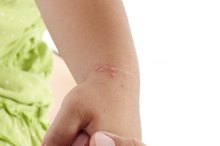What does fact checked mean?
At Healthfully, we strive to deliver objective content that is accurate and up-to-date. Our team periodically reviews articles in order to ensure content quality. The sources cited below consist of evidence from peer-reviewed journals, prominent medical organizations, academic associations, and government data.
- Centers for Disease Control and Prevention: Why is Handwashing Important?
- Deutsches Arzteblatt International: Hand Hygiene for the Prevention of Nosocomial Infections
- Deutsches Arzteblatt International: Hand Hygiene for the Prevention of Nosocomial Infections
- Journal of Clinical and Diagnostic Research: Semmelweis’s Forgotten Gift -- Has Handwashing Lost Its Importance?
- Journal of Clinical and Diagnostic Research: Semmelweis’s Forgotten Gift -- Has Handwashing Lost Its Importance?
The information contained on this site is for informational purposes only, and should not be used as a substitute for the advice of a professional health care provider. Please check with the appropriate physician regarding health questions and concerns. Although we strive to deliver accurate and up-to-date information, no guarantee to that effect is made.
What Are the Benefits of Hand Washing?
Children often hear parents or teachers reminding them to wash their hands throughout the day, but adults could use some reminding as well. A 2003-04 Minnesota Department of Health study observed hand washing behavior in public restrooms at three events 1. Observations revealed that 64 to 75 percent of females washed their hands after using the bathroom. Only 30 to 51 percent of males washed their hands. Keeping in mind some of the major health benefits of hand washing may help you commit to the practice.
Reduces Risk in Medical Settings
Hand washing is a simple yet vital behavior in hospitals and other medical facilities. Its importance was first realized in a Vienna hospital in the 19th century. Maternity patients were dying at a high rate. Dr. Ignaz Semmelweis started ordering his staff members to wash their hands before treating the patients, drastically lowering the death rate as a result. The transfer of bacteria from cadavers to the patients from the staff's hands was the culprit in the deaths. Ensuring that today's medical professionals make hand washing a priority is essential.
- Hand washing is a simple yet vital behavior in hospitals and other medical facilities.
- The transfer of bacteria from cadavers to the patients from the staff's hands was the culprit in the deaths.
Lowers Risk of Diarrhea and Intestinal Problems
The Disadvantages of Hand Sanitizers
Learn More
Washing hands lowers the risk of having diarrhea and developing intestinal infections, an important benefit particularly for children. Diarrheal disease is one of the leading causes of death in children under 5 throughout the world. Contact with fecal matter causes such illnesses and can be prevented by washing hands with soap. It may also prevent complications connected to intestinal worms.
- Washing hands lowers the risk of having diarrhea and developing intestinal infections, an important benefit particularly for children.
- Contact with fecal matter causes such illnesses and can be prevented by washing hands with soap.
Prevents Eye Infections
The spread of bacterial eye infections, such as trachoma, can be reduced through regular hand washing. It can also lower the likelihood of contracting conjunctivitis, or pink eye. This irritating eye condition causes eye pain, itching, light sensitivity and discharge. It is spread a number of ways, with the most common being through viruses. Always wash your hands before putting in contacts, as being a contacts wearer increases your risk of having pink eye.
- The spread of bacterial eye infections, such as trachoma, can be reduced through regular hand washing.
Lowers Respiratory Infection Risk
CRV Infections
Learn More
You can lower your chances of developing an acute respiratory infection by making hand washing a priority. The pathogens that cause respiratory complications are commonly found on surfaces and hands. Some of the pathogens associated with diarrhea also cause respiratory problems. Hand washing significantly reduces your chances of getting sick.
- You can lower your chances of developing an acute respiratory infection by making hand washing a priority.
- Hand washing significantly reduces your chances of getting sick.
Related Articles
References
- Minnesota Department of Health: Hand Washing Among Public Restroom Users At the Minnesota State Fair
- Centers for Disease Control and Prevention: Why is Handwashing Important?
- World Health Organization: Global Handwashing Day Planner's Guide
- Deutsches Arzteblatt International: Hand Hygiene for the Prevention of Nosocomial Infections
- Journal of Clinical and Diagnostic Research: Semmelweis’s Forgotten Gift -- Has Handwashing Lost Its Importance?
- Centers for Disease Control and Prevention. Show Me the Science - When & How to Use Hand Sanitizer.
- Centers for Disease Control and Prevention. When and How to Wash Your Hands.
- Jabbar U, Leischner J, Kasper D, et al. Effectiveness of alcohol-based hand rubs for removal of Clostridium difficile spores from hands. Infect Control Hosp Epidemiol. 2010;31(6):565-70. doi: 10.1086/652772
- Centers for Disease Control and Prevention. Clean Hands Save Lives.
- Centers for Disease Control and Prevention. Show Me the Science - When & How to Use Hand Sanitizer.
Writer Bio
Previously working for the North Carolina Community College System, Rachel Morgan has been a freelance writer and editor for over six years. She has a bachelor's degree in public health as well as a master's degree in English.









